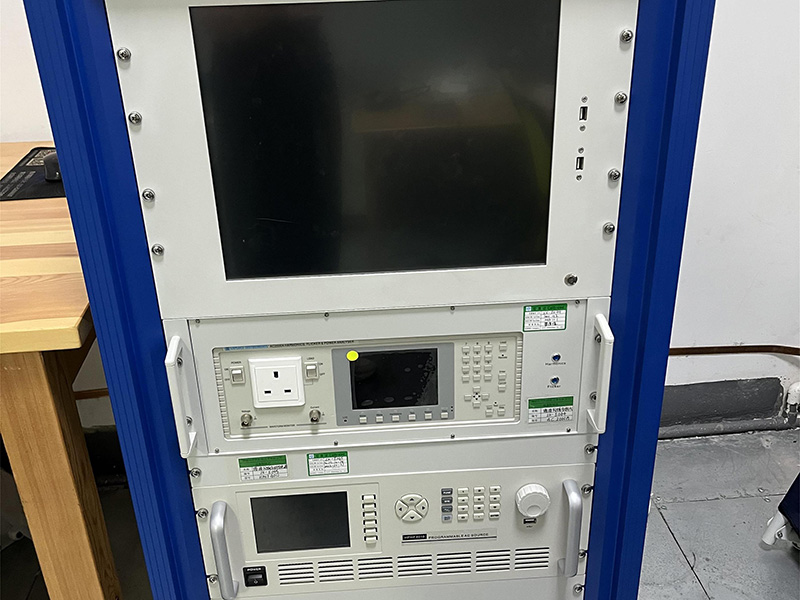Harmonics, flicker test

Details
Harmonics and Flicker tests are two important items in the electromagnetic compatibility (EMC) testing of power systems and electrical equipment. They are mainly used to assess the impact of electrical equipment on the power grid, ensuring the stability of the power grid and the quality of power.
I. Harmonic Testing (Harmonics
1. Test purpose
The purpose of harmonic testing is to assess the level of harmonic current or voltage injected into the power grid by electrical equipment during operation. The existence of harmonics can cause distortion of the voltage and current waveforms in the power grid, affecting the power quality of the power grid and possibly causing interference or damage to other equipment.
2. Definition of Harmonics
Harmonics are sine waves of frequencies that are integer multiples of the fundamental frequency. For instance, if the fundamental frequency of the power grid is 50Hz, then the frequency of the second harmonic is 100Hz, the frequency of the third harmonic is 150Hz, and so on. The amplitude and phase of harmonic currents and voltages can affect the total harmonic distortion (THD) of the power grid.
3. Test standards
International standard: IEC 61000-3-2 (Harmonic Current Emission Limits Applicable to Equipment).
National standard: GB 17625.1 (equivalent to IEC 61000-3-2).
4. Test Method
Harmonic testing is usually achieved by measuring the harmonic current injected into the power grid by the equipment during operation. The test equipment includes:
Power analyzer: It is used to measure the waveforms of current and voltage.
Harmonic analyzer: Specifically designed for analyzing harmonic content.
The test steps are as follows:
Equipment connection: Connect the device under test (EUT) to the power grid and ensure that the test equipment can accurately measure current and voltage.
Measurement: Under the normal operation of the equipment, measure the current and voltage waveforms in the power grid.
Analysis: Use a harmonic analyzer to calculate the content of each harmonic, including total harmonic distortion (THD).
Evaluation: Compare the measurement results with the standard limit values to determine whether the equipment meets the requirements.
5. Test result evaluation
The results of harmonic testing are usually expressed as the amplitudes of each harmonic current and the total harmonic distortion (THD). If the harmonic current of the equipment does not exceed the limit value specified in the standard, it is considered that the equipment has passed the harmonic test.
Ii. Flicker Test
1. Test purpose
The purpose of flicker testing is to assess the impact of electrical equipment on grid voltage fluctuations during operation. Flickering is usually manifested as flashing lights or voltage fluctuations, which may affect the stability of the power grid and the normal use of users.
2. Definition of flashing
Flickering is caused by rapid changes in grid voltage, usually resulting from the start or stop of equipment or changes in load. The severity of flickering depends on the amplitude and frequency of voltage changes.
3. Test standards
International standard: IEC 61000-3-3 (Voltage Fluctuation and flicker emission Limits applicable to equipment).
National standard: GB 17625.2 (equivalent to IEC 61000-3-3).
4. Test Method
Flicker testing is usually achieved by measuring the grid voltage fluctuations caused by the equipment during operation. The test equipment includes:
Voltage fluctuation and flicker measuring instrument: It is used to measure the amplitude and frequency of voltage fluctuation and flicker.
Power analyzer: It is used to measure the power variation of equipment.
The test steps are as follows:
Equipment connection: Connect the device under test (EUT) to the power grid and ensure that the test equipment can accurately measure the voltage.
Measurement: Under the condition that the equipment is operating normally, measure the voltage fluctuations in the power grid.
Analysis: Use a flicker meter to calculate the amplitude and frequency of voltage fluctuations and assess the severity of flicker.
Evaluation: Compare the measurement results with the standard limit values to determine whether the equipment meets the requirements.
5. Test result evaluation
The results of the flicker test are usually expressed in terms of the amplitude of voltage fluctuation and the flicker index (Pst and Plt). Pst is the short-term scintillation index, and Plt is the long-term scintillation index. If the flicker index of the equipment does not exceed the limit value specified by the standard, it is considered that the equipment has passed the flicker test.

 Scan WeChat to chat
Scan WeChat to chat